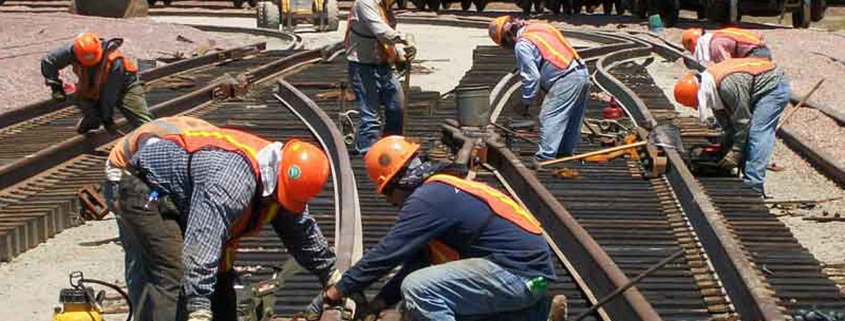The Dangers of Whole-Body Vibration Injuries Among Railroad Workers
In the railroad industry, many workers experience cumulative trauma because of the types of jobs they do. It takes an immense amount of force to power a train that is moving millions of pounds of steel and cargo, and workers who are helping to move these trains are at risk of whole-body vibration injuries.
Whole-body vibration (WBV) describes the exposure to the effects of mechanical forces such as jolts, shocks, vertical bouncing, and lateral swaying that commonly happen on trains. These forces can be transmitted to locomotive engineers and other train workers either while they are standing or when they are in a seated position. Various railroad industry employees are continually exposed to the effects of whole-body vibration, which can result in a number of different types of repetitive stress/cumulative trauma injuries.
The railroad industry is aware of the work conditions that can cause whole body vibration injuries to develop over time; but sadly, far too many companies prioritize profits over the health and well-being of their workers. Rather than taking adequate steps to protect train workers from injury, they often do very little, and in many cases, workers do not notice the symptoms of a cumulative trauma injury until it is too late to prevent long-term damage to the body.
If you are a railroad industry worker who has suffered from a cumulative trauma injury that was caused by whole-body vibration, you may be entitled to significant compensation under the Federal Employers Liability Act (FELA). For a free consultation and case assessment with an experienced FELA attorney in Alabama, contact Burge & Burge today at 205-251-9000.
Types of Whole-Body Vibration Injuries
Cumulative trauma/repetitive stress injuries from whole-body vibration can affect several areas of the body, including:
· Arms and shoulders
· Elbows, wrists, and hands
· Neck, back and spine
· Legs and knees
· Ankles and feet
Train workers are susceptible to whole body vibration injuries from the cumulative effects of standing and sitting in and on trains year after year. However, the risks of this type of injury increase significantly when workers are asked to do certain tasks while the train is in motion, such as lifting or doing something that puts them in an awkward position/posture.
Some of the common injuries that can result from the cumulative trauma caused by whole-body vibration on trains include:
· Neck injuries, including tightness, spasming, and nerve damage that causes referred pain to other areas of the body.
· Spinal injuries, such as nerve injuries and herniated or degenerated discs.
· Joint injuries, which commonly affect areas like the shoulders, elbows, wrists, hips, and knees.
· Repetitive strain injuries, often resulting in conditions like carpal tunnel syndrome that affect the wrists and hands.
Because whole body vibration happens on trains over an extended period of time, it can be difficult sometimes for a worker to recognize that they have a resulting injury. Here are some common symptoms of cumulative trauma injuries to look out for:
· Stiffness in the neck.
· Headaches and dizziness.
· Weakness and aches in various parts of the body.
· Burning and tingling sensations in the joints.
· Impaired/limited range of motion in certain parts of the body.
· Pain in affected areas that gets worse with increased activity.
Train workers who experience the onset of any of these symptoms should seek medical care right away, so they can receive a proper diagnosis and begin immediate treatment. In addition, it is very important to follow all of your doctors’ recommendations in order to minimize the adverse effects of your injury. Once you have addressed the medical side of things, speak with a FELA lawyer to find out if you have a viable legal claim.
Railroads Have Long Been Aware of the Dangers of Whole-Body Vibration Injuries
It is abundantly clear that railroad companies have known about the potential for permanent injury from ongoing exposure to whole-body vibration for several decades. For example, a 1996 Federal Rail Administration report found that vibrations in locomotive cabs were caused mainly by reciprocating equipment, faulty locomotive suspension systems, and irregularities in the train track and rail bed. But although the industry has known about these issues for a long time, they have done far too little toward making things safer for their workers.
Because the railroads have had extensive knowledge of the potential for injuries from whole-body vibration, railroad companies have paid out millions of dollars in damages to WBV injury claimants over the years. Under FELA, claimants can seek damages not only for direct monetary losses such as medical bills and lost earnings, but also for noneconomic losses such as pain-and-suffering and emotional distress.
Contact a Skilled and Knowledgeable Alabama FELA Claims Attorney
If you believe you have a possible FELA claim because of a whole-body vibration injury or any other type of railroad worker injury, Burge & Burge is ready to go to work for you! To get started, message us online or call us today at 205-251-9000 to set up your free, no obligation consultation.




Leave a Reply
Want to join the discussion?Feel free to contribute!